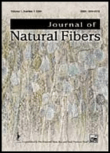
Journal of Natural Fibers
Scope & Guideline
Advancing Knowledge in Natural Fiber Innovation
Introduction
Aims and Scopes
- Natural Fiber Characterization:
Research on the physical, chemical, and mechanical properties of various natural fibers, including their structures and characteristics, to understand their potential applications. - Fiber Modification Techniques:
Studies focusing on chemical, physical, and enzymatic treatments to enhance the properties of natural fibers, including their strength, durability, and functional capabilities. - Sustainable Applications:
Exploration of natural fibers in eco-friendly products, including textiles, composites, and biodegradable materials, highlighting their environmental benefits. - Innovative Fiber Composites:
Development and analysis of composite materials that incorporate natural fibers, addressing their mechanical and thermal properties for industrial applications. - Natural Dyeing and Finishing Processes:
Research into the use of natural dyes and eco-friendly finishing methods for textile applications, aiming to reduce environmental impact while preserving aesthetic qualities. - Technological Integration:
Investigations into the integration of natural fibers with modern technologies, such as nanotechnology and advanced manufacturing techniques, to enhance performance and applications.
Trending and Emerging
- Biocomposites and Sustainable Materials:
An increasing body of work is dedicated to the development of biocomposites that utilize natural fibers for enhanced sustainability in construction, packaging, and automotive applications. - Functionalization of Natural Fibers:
Research is trending towards the functionalization of natural fibers with additives and treatments that impart specific properties, such as antibacterial or UV protection, broadening their application scope. - Natural Fiber in Smart Textiles:
There is a growing interest in integrating natural fibers into smart textiles, focusing on their potential for use in wearable technology and health monitoring applications. - Environmental Impact Studies:
Research examining the environmental impact of natural fibers, including lifecycle assessments and sustainability analyses, is gaining prominence as the industry seeks greener solutions. - Nanotechnology in Fiber Development:
The application of nanotechnology to enhance the properties of natural fibers, such as strength, durability, and functionality, is emerging as a significant area of research.
Declining or Waning
- Traditional Fiber Applications:
There appears to be a decreasing emphasis on traditional uses of natural fibers, such as in basic textiles, as more innovative and functional applications gain traction. - Chemical Fiber Treatments:
Research on the use of harsh chemical treatments for fiber enhancement is declining, possibly due to the increasing preference for environmentally friendly methods. - Conventional Natural Dyeing Methods:
The exploration of conventional dyeing methods is waning in favor of sustainable and innovative dyeing techniques that reduce environmental impact. - Basic Mechanical Testing:
There is a noticeable shift away from basic mechanical property testing of fibers towards more complex analyses that consider multi-fiber interactions and composite behaviors. - Static Applications:
Research focusing solely on static applications of natural fibers, such as in non-load-bearing textiles, is diminishing as the focus shifts towards dynamic and functional applications.
Similar Journals

Journal of Fiber Science and Technology
Fostering Collaboration in Fiber TechnologyJournal of Fiber Science and Technology is a pivotal scholarly publication dedicated to advancing the field of fiber science, encompassing the study of fibers and textiles across various applications. Published by SOC FIBER SCIENCE TECHNOLOGY in Japan, this journal has been a significant forum for innovative research since its inception, with coverage from as early as 1946. Despite its current categorization in the Q4 quartile across multiple disciplines including Chemical Engineering, Industrial and Manufacturing Engineering, and Materials Science, the journal provides a valuable platform for the dissemination of knowledge, fostering collaboration among researchers, professionals, and students alike. The journal promotes an interactive learning environment, welcoming contributions that underscore the latest advancements in fiber materials, processing technologies, and their broad industrial implications. By bridging theory and practical application, the Journal of Fiber Science and Technology is essential in shaping the future of fiber technology.
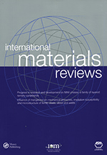
INTERNATIONAL MATERIALS REVIEWS
Your Gateway to Cutting-Edge Materials ReviewsINTERNATIONAL MATERIALS REVIEWS, published by SAGE Publications Inc, is a leading journal dedicated to the comprehensive analysis of contemporary research in the fields of materials chemistry, mechanical engineering, mechanics of materials, and the study of metals and alloys. With an impressive impact factor and a Q1 ranking across multiple categories such as Materials Chemistry and Mechanical Engineering in 2023, it ranks amongst the top journals for innovative materials research. The journal has a long-standing history since its inception in 1987 and continues to serve as a crucial resource for academics and professionals alike. Although it is not open access, it is renowned for its rigorous peer-review process and its commitment to disseminating high-quality materials science research globally. Researchers, students, and industry professionals benefit greatly from the journal's insightful reviews, both for the advancement of theoretical knowledge and practical applications within the fast-evolving materials field.

REVIEWS ON ADVANCED MATERIALS SCIENCE
Exploring Innovations in Materials ScienceREVIEWS ON ADVANCED MATERIALS SCIENCE, published by De Gruyter Poland SP Z O O, is a preeminent open-access journal dedicated to disseminating cutting-edge research in the fields of condensed matter physics, materials science, and nanoscience. Since its inception in 2003, the journal has established itself as a crucial platform for scholars and practitioners to share innovative insights and advancements, achieving a commendable Q2 ranking in its respective categories for 2023. With its headquarters in the Russian Federation, the journal is not only committed to expanding the frontiers of scientific knowledge but also emphasizes inclusivity through its open-access model, which has been in effect since 2019, enabling universal access to its high-quality content. With an impactful standing illustrated by its Scopus rankings—136th in Condensed Matter Physics and 186th in General Materials Science—REVIEWS ON ADVANCED MATERIALS SCIENCE stands as a vital resource for researchers, professionals, and students eager to engage with contemporary discussions and discoveries in materials science.

COMPOSITES PART A-APPLIED SCIENCE AND MANUFACTURING
Transforming Ideas into Cutting-Edge ApplicationsCOMPOSITES PART A-APPLIED SCIENCE AND MANUFACTURING, published by Elsevier Science Ltd, is a premier international journal that serves as a vital platform for the dissemination of high-impact research and innovation in the fields of composite materials and manufacturing technologies. With an impact factor that reflects its outstanding reputation, this journal is categorized in the Q1 quartile for both Ceramics and Composites and Mechanics of Materials, positioning it among the top journals in these disciplines. It holds impressive ranks in Scopus, specifically Rank #16 out of 398 in Engineering - Mechanics of Materials and Rank #10 out of 127 in Materials Science - Ceramics and Composites, reinforcing its authoritative stance in the field. Spanning from 1996 to 2024, the journal features a wide array of research articles, reviews, and case studies that collectively enhance understanding and foster advancements in composite materials. With an open access model facilitating wide dissemination, COMPOSITES PART A is indispensable for researchers, professionals, and students striving to push the boundaries of materials science and engineering.
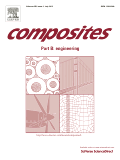
COMPOSITES PART B-ENGINEERING
Innovating Engineering Through Cutting-Edge ResearchCOMPOSITES PART B-ENGINEERING, published by Elsevier Science Ltd, stands at the forefront of research in the fields of engineering and materials science, specifically targeting the domains of composites, ceramics, and mechanical engineering. With an impressive impact factor and categorized in the prestigious Q1 quartiles across multiple categories including Industrial and Manufacturing Engineering and Mechanics of Materials, this journal fosters innovative research that significantly contributes to the advancement of composite materials and their applications. The journal has been diligently publishing high-quality peer-reviewed articles since its inception in 1996, and it continues to attract top-tier contributors and researchers who are dedicated to exploring emergent technologies and methodologies. Researchers, professionals, and students will find valuable insights and an extensive pool of resources in this essential journal, available through Open Access options that enhance its visibility and reach, allowing the dissemination of crucial knowledge to the global scientific community.

FIBRE CHEMISTRY
Bridging Fundamental Science with Practical Fibre Applications.Fibre Chemistry is an esteemed journal published by Springer, focusing on the intricate and evolving field of polymer science and textile engineering. With its ISSN 0015-0541 and E-ISSN 1573-8493, this journal serves as a pivotal resource for researchers, practitioners, and students, highlighting significant advancements and innovations in fibre technology since its inception in 1969. Despite its current positioning in the Q3 quartile across Chemical Engineering, Chemistry, and Materials Science categories, Fibre Chemistry continually aims to bridge the gap between fundamental science and practical application by disseminating high-quality, peer-reviewed research articles. The journal does not currently operate under an open access model, but it provides crucial insights that foster collaboration and drive progress within its field. With the ongoing convergence of technologies and materials, this publication is poised to contribute significantly to the academic discourse surrounding fibre chemistry and its related disciplines until 2024 and beyond.
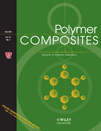
POLYMER COMPOSITES
Exploring Innovations in Composite MaterialsPOLYMER COMPOSITES, published by WILEY, is a leading journal dedicated to advancing the fields of materials science and engineering through the exploration of polymer composite materials. With its foundation dating back to 1980, this esteemed journal has continuously provided a platform for researchers to publish high-quality studies and innovative methodologies in areas such as ceramics, composites, and miscellaneous chemistry. Ranked in the prestigious Q1 quartile for sectors like Polymers and Plastics as well as Materials Chemistry, POLYMER COMPOSITES stands significant within the academic community, holding a notable impact factor that reflects its influence. The journal encompasses a comprehensive range of topics, making it essential reading for professionals, researchers, and students aiming to stay at the forefront of developments in polymer science and composite technologies. Although it does not currently offer Open Access, readers can access its impactful publications through institutional or individual subscriptions, contributing to ongoing advancements in the field and facilitating the exchange of valuable knowledge among scientists and engineers worldwide.

FIBERS AND POLYMERS
Elevating Knowledge in Fibers and PolymersFIBERS AND POLYMERS is a prestigious scholarly journal published by the Korean Fiber Society, specializing in the fields of Chemical Engineering, Chemistry, and Polymer Science. Since its inception in 2000, the journal has provided a dynamic platform for researchers and professionals to disseminate cutting-edge findings and innovative methodologies related to fibers, polymers, and their diverse applications. With its Q2 category ranking across multiple disciplines in 2023 and a commendable standing in Scopus rankings—ranking #183 in General Chemistry and #127 in General Chemical Engineering—it is well-regarded within the academic community. The journal’s commitment to quality research is further underscored by its comprehensive coverage of technological advancements and theoretical developments relevant to both industry and academia. Access to published articles may vary, and authors are encouraged to submit original research to contribute to this evolving field. Join the community shaping the future of materials science through FIBERS AND POLYMERS.

INDIAN JOURNAL OF FIBRE & TEXTILE RESEARCH
Transforming textile research into impactful solutions.INDIAN JOURNAL OF FIBRE & TEXTILE RESEARCH (ISSN: 0971-0426, E-ISSN: 0975-1025) is a leading platform dedicated to advancing the field of textile research and innovation. Published by the NATIONAL INSTITUTE OF SCIENCE COMMUNICATION-NISCAIR in India, this open access journal has been fostering knowledge sharing since its establishment in 2006. With a broad scope encompassing Chemical Engineering, Environmental Science, and Materials Science, the journal's convergence from 1990 to 2024 highlights its commitment to ongoing academic dialogue. Currently categorized as Q3 in several disciplines, including Chemical Engineering and Environmental Science, it provides critical insights into contemporary challenges and developments. The journal's Scopus rankings further illustrate its influence within the research community, making it an essential resource for researchers, professionals, and students interested in textile technology and its intersections with sustainable practices. By fostering a collaborative environment for sharing pioneering research, the INDIAN JOURNAL OF FIBRE & TEXTILE RESEARCH stands as a vital conduit for scholarly communication in the textile sector.
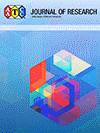
AATCC Journal of Research
Exploring groundbreaking advancements in materials chemistry.AATCC Journal of Research is an esteemed publication at the forefront of materials science, focusing on the latest advancements in the fields of materials chemistry, polymers and plastics, and process chemistry and technology. Published by SAGE Publications Inc. in the United States, the journal disseminates high-quality research that shapes the future of textile and materials innovation through rigorous peer-reviewed studies. With a notable impact factor indicative of its scholarly influence, AATCC Journal of Research stands out in the Q3 quartile rankings across its categories for 2023, making it a significant platform for emerging research and technological advancements. The journal's commitment to excellence is reflected in its extensive coverage from 2014 to 2024, and it is an essential resource for researchers, professionals, and students aiming to stay abreast of the latest trends and technologies in the materials science domain. While it operates under a traditional access model, the potential for pioneering knowledge exchange remains paramount, further solidifying its role in the academic and professional communities.